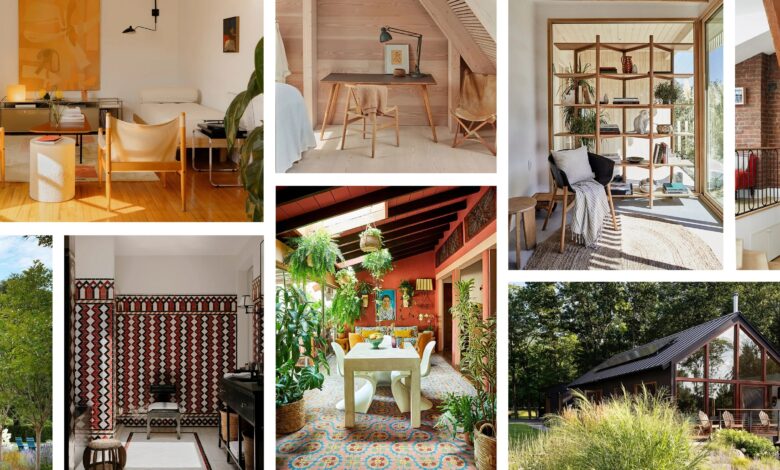Journey Through History: Style, Decoration, and Architecture

This exploration of architectural history will examine the fascinating evolution of style, decoration, and architecture, tracing their profound impact on the human narrative. Throughout history, these elements have served as enduring expressions of creativity, encapsulating cultural values and societal aspirations. This journey takes you from ancient civilisations’ awe-inspiring wonders to modern design’s sleek lines.
From the monumental ziggurats of Mesopotamia to the grandeur of Versailles in France, architecture has continually evolved, reflecting the ever-changing human spirit. As you navigate this architectural odyssey, it’s essential to acknowledge that individuals passionate about shaping the future of design can study interior design online. Reputable online design courses offer the opportunity to acquire essential skills and participate in the ongoing architectural innovation transformation.
Read More: The Beauty of Home Decor: A Guide to Creating a Cozy Space
Foundations of Style
Ancient civilisations, such as Mesopotamia and Egypt, laid the groundwork for architectural wonders that continue to inspire awe. For instance, Mesopotamian ziggurats were towering structures and symbols of power and spirituality. These stepped temples were meticulously designed with terraces and intricate carvings representing the link between the earth and the heavens. Similarly, the pyramids of Egypt stand as a testament to the ingenuity of their architects. These colossal structures, including the Great Pyramid of Giza, were constructed with precise mathematical calculations and served as grand tombs for pharaohs, reflecting their divine status.
Greek and Roman Influence
Moving forward in history, we encounter the classical elegance of Greece and Rome. The Greeks introduced the world to architectural principles that emphasised proportion and harmony. They developed three iconic column styles: the sturdy Doric, the graceful Ionic, and the ornate Corinthian, each with unique characteristics. These columns became fundamental elements in Greek temples, exemplifying their commitment to architectural excellence. Meanwhile, the Romans, inspired by Greek architecture, took grandeur to new heights. The Colosseum, an engineering marvel, could hold over 50,000 spectators, hosting epic gladiator battles and other events. The Pantheon, another Roman masterpiece, showcased a massive dome and a carefully calculated oculus, or open central eye, allowing sunlight to filter into the temple.
Cathedrals and Castles
During the medieval period, architecture took on new forms that were both spiritual and defensive. Gothic architecture emerged as a defining style, characterised by soaring spires, ribbed vaults, and intricate stained glass windows. Cathedrals like Notre Dame in Paris and Chartres Cathedral in France were constructed as places of worship and as symbols of divine majesty. Meanwhile, medieval Europe saw the rise of castles and fortifications that combined strength and elegance. These stone strongholds, like Neuschwanstein Castle in Germany, featured drawbridges, battlements, and imposing towers, protecting while also showcasing the wealth and status of their owners.
Art and Proportion
The Renaissance marked a cultural and artistic revival, emphasising proportion, humanism, and the resurrection of classical ideals. Architects like Filippo Brunelleschi introduced new engineering techniques. Brunelleschi’s crowning achievement was the construction of the dome for Florence’s cathedral, a feat that required innovative scaffolding and mathematical precision. Similarly, St. Peter’s Basilica in Vatican City, designed by Michelangelo, blended classical elements with spiritual significance. The basilica’s grandeur and harmonious proportions reflected the Renaissance belief in the unity of art, science, and faith, creating a space that inspired awe and devotion.
Baroque Extravaganza
The Baroque era that followed the Renaissance was characterised by luxury and extravagance. It was when decoration took centre stage, and buildings showcased wealth and power. The Palace of Versailles in France epitomised this lavishness. Its grand gardens, Hall of Mirrors, and meticulously adorned interiors showcased the wealth and influence of the French monarchy. Baroque architects, such as Gian Lorenzo Bernini, created ornate facades and dramatic sculptures that adorned churches and palaces, transforming them into theatrical masterpieces.
Modernism and Beyond
In the 20th century, architecture underwent a significant shift with the advent of Modernism. This movement emphasised functionality, simplicity, and the idea that “form follows function.” Architects such as Frank Lloyd Wright and Le Corbusier led the way in redefining architectural norms. Fallingwater, designed by Wright, is a prime example of this philosophy, where the house harmoniously integrates with its natural surroundings. Similarly, Villa Savoye, designed by Le Corbusier, showcases clean lines, open spaces, and a focus on efficiency. Modernist architecture challenged traditional ornamentation and emphasised using innovative materials and technology.
Read More: 10 Best Budget-Friendly Home Decoration Ideas in 2023
Conclusion
In conclusion, the journey through history has uncovered the enduring significance of style, decoration, and architecture as vital chapters in the story of human civilisation. These elements have shaped the physical surroundings and echoed life’s cultural, spiritual, and functional dimensions.
As people stand at the intersection of the past and the future, they must recognise that those eager to contribute to this rich tradition can study interior design online. Reputable online design courses provide a platform for individuals to refine their skills and engage with the ever-evolving world of architectural design. This opportunity ensures that the legacy of architectural innovation continues, preserving the spirit of creativity and progress that has defined our architectural journey thus far. Whether marvelling at the grandeur of ancient wonders or appreciating the minimalist elegance of modern structures, each architectural masterpiece reflects the indomitable spirit of human expression, waiting to be explored and celebrated.











